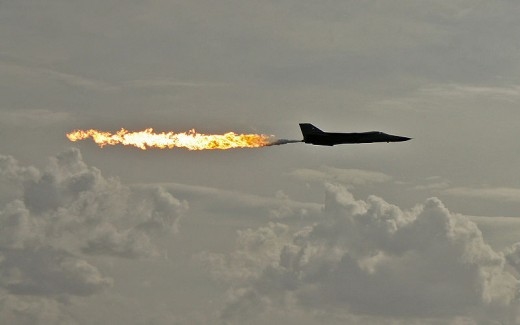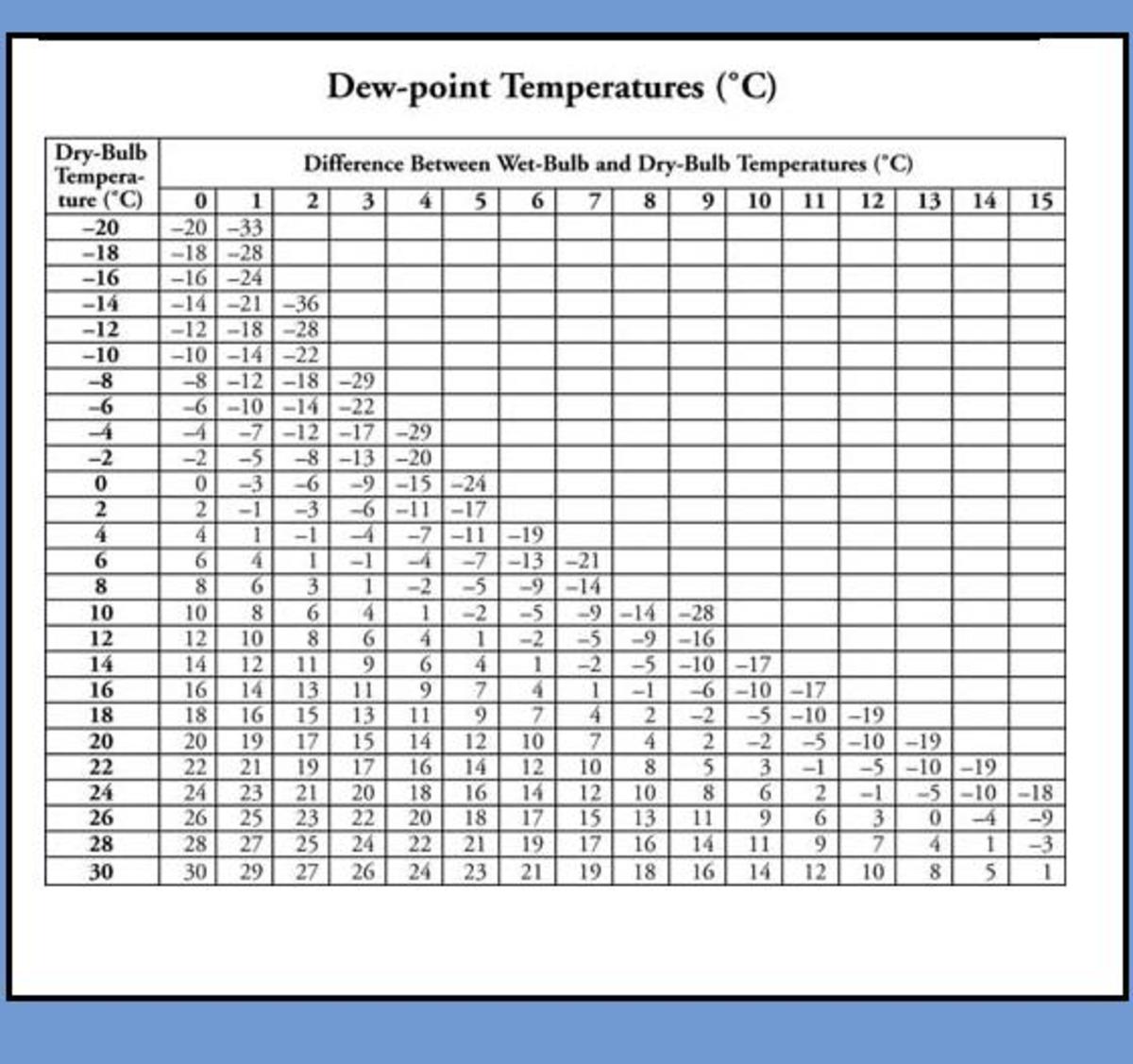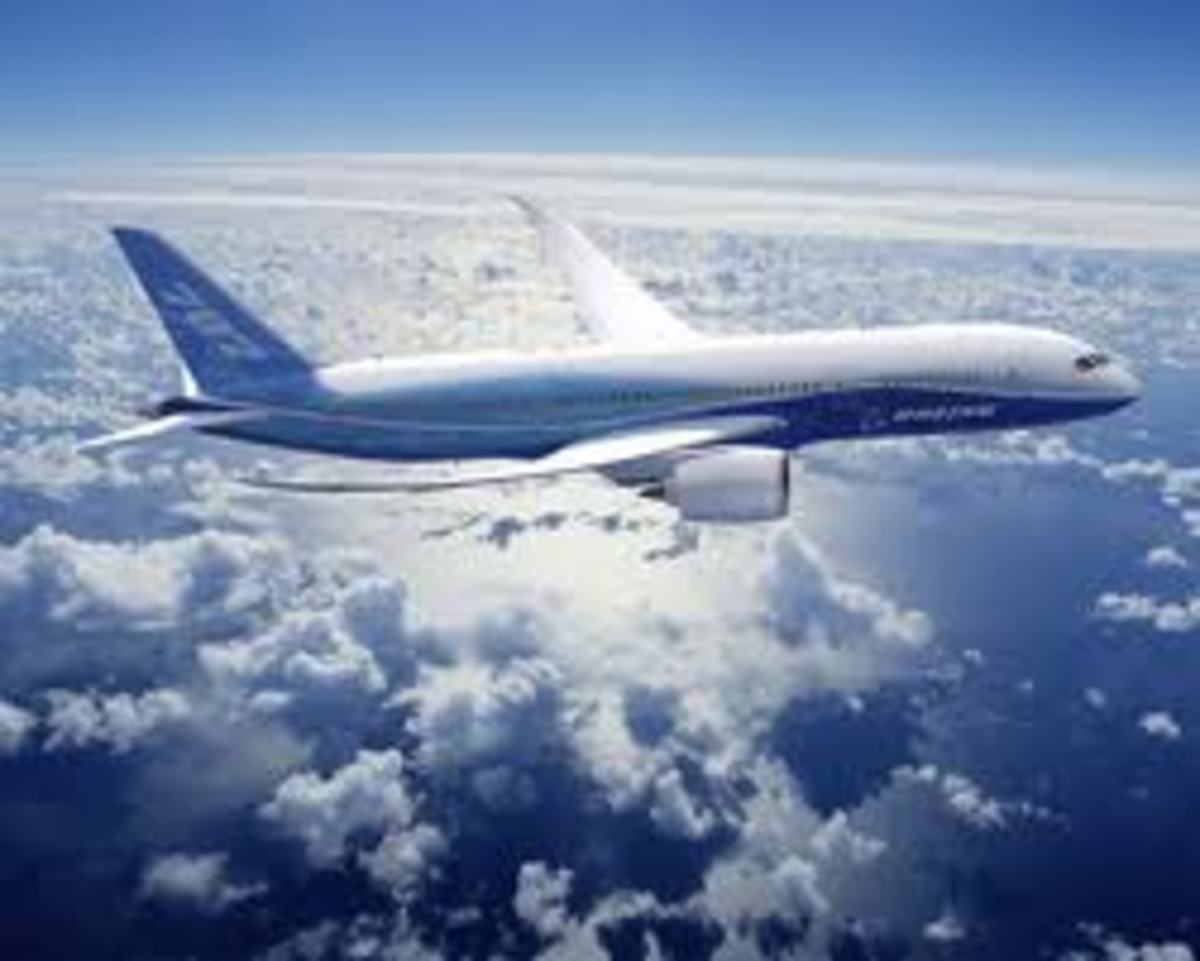Weather on Aircrafts
Effects of Weather to Aircrafts
Weather effects to aircrafts are in almost every action that a pilot of an aircraft takes. Weather parameters that are considered in aviation include relative humidity, temperatures, pressure, wind, jet streams, static electricity, convective clouds, thunder, storms, fog, mist, hurricanes, snow, volcanic ash, rain, etc. All these weather elements have to be considered at the aircraft’s parking, take-off, en-route flight and landing.
For one to understand how weather affect an aircraft, one need to first to understand the meaning of a few aviation terms as used in specification of aircrafts. Below is an example of such specifications which are based on a Boeing 777 plane which is used for commercial services:
Fuselage width …………………………………….6.0 m
Fuselage height …………………………………...8.5 m
Fuselage length ……………………………….....63.0 m
Empty operating - OEW………………………..133,000 kg
Maximum Zero Fuel - ZFW ……………………191,000 kg
Maximum Take-Off Weight - MTOW …………243,000 kg
Maximum Landing Weight - MLW …………….202,000 kg
Standard fuel capacity …………………………117,000 kg
Normal cruise Speed ……………………………….900 km/h
Long Range Cruise altitude …………………37,000 feet
Take Off field length ……………………………..2,440 m
Max passengers …………………………………….400
1. Fuselage
Fuselage is the aircraft’s main body that holds the crew and passengers or cargo. From the data above the volume of that main body is 3213 cubic meters. A 20 feet container has a volume of 32 cubic meters. This therefore means that the volume of Boeing 777 fuselage is equivalent to about 100 standard 20 feet containers. When you add the volume of the wings and fuel tanks and engines, you get an idea of the volume of such an aircraft.
2. Operating Empty Weight - OEW
Operating empty weight - OEW is the weight of the aircraft with the crew and the gears and accessories required for flight (but without payload and fuel). In this case of Boeing 777, the OEW is 133,000 kgs.
Fuel Dump

3. The Maximum Zero Fuel Weight - MZFW
The Maximum Zero Fuel Weight - MZFW of an aircraft is the total weight of the aircraft and all its contents, less the total weight of the fuel on board. In this case of Boeing 777, the OEW is 191,000 kgs. From 2 above, you can see this airplane can carry a maximum payload of 191,000 minus 133,000 which is equals to 58,000 Kgs.
Moisture Trail
Fuel dump should not be confused with moisture trail that you may see from low flying aircrafts when the moisture is high and sky is clear. Moisture trails are to be seen coming off the top of the wings, wingtips, or trailing edge flaps. This happens when the plane passes through the moist air where there is heating and exhaust from engines which makes the moist air to change its properties. And because the sky is clear then, it’s easier for you to see the trail of moisture lag behind the plane. This has nothing to do with weather observations.
4. The Maximum Take-Off Weight - MTOW
The Maximum Takeoff Weight - MTOW is the maximum weight of the airplane including fuel and payload at which the pilot of the aircraft is allowed to attempt to take off. It is the heaviest weight at which the aircraft has been shown to meet all the airworthiness requirements applicable to it. This MTOW capability may reduce with the age of the plane. Most aviation fees that are charged to an aircraft are based on this maximum take-off weight. This therefore means every airplane would leap maximum economical benefits when it take-off at maximum take-off weight. But in many cases an airplane will never be permitted to take off at maximum take-off weight because of other factors of which most of these factors are weather related such as wind speed and direction, pressure and temperature.
5. Maximum Landing Weight – MLW
Maximum Landing Weight – MLW is the maximum weight of the airplane including fuel and payload at which the pilot of the aircraft is allowed to attempt to land. It is the heaviest weight at which the aircraft has been shown to meet all the airworthiness requirements applicable to it. This MLW capability may reduce with the age of the plane. Maximum Landing weight will always be less than Maximum Takeoff Weight.
An airplane will usually take off at the higher weight and consume fuel en route, and land at the destination airport at a lower weight. In this case of Boeing 777, the Maximum Take-Off Weight - MTOW is 243,000 kg and Maximum Landing Weight – MLW is 202,000 kg. This means that if Boeing 777 ever takes-off at maximum take-off weight of 243,000 kgs., then it must consume or dump the difference between 243,000 kgs and 202,000 kgs which is 41,000 kgs of fuel. If this airplane was to take-off and then immediately develops a mechanical problem or other serious situation where it has to return to the departure airport, then it will have to dump 41,000 kgs of fuel in to the atmosphere before attempting to land again. Modern airplanes are able to do this by spraying excess fuel out into atmosphere and as the fuel get out it is ignited by a burner and the fuel is set burning in the atmosphere ( as shown in the picture). It’s a very spectacular thing to watch but remember that this is an emergency and requires your sympathy. When you see this expect the worst because in several cases this may result with the airplane crushing and souls will be lost.
Fuel dump should not be confused with moisture trail that you may see from low flying aircrafts when the moisture is high and sky is clear. Moisture trails are to be seen coming off the top of the wings, wingtips, or trailing edge flaps. This happens when the plane passes through the moist air where there is heating and exhaust from engines which makes the moist air to change its properties. And because the sky is clear then, it’s easier for you to see the trail of moisture lag behind the plane. This has nothing to do with weather observations.
You may be asking what all this has to do with aviation weather? Let’s look at how individual elements of weather affect the maximum specifications of an aircraft such as the Maximum Takeoff Weight, which is the most economical and profitable weight capacity - Maximum Takeoff Weight is not always achieved.
6. Air Temperature
In science we learnt that when you heat air it expands and when it expands its density decreases. For the engines to be able to lift the huge mass of the airplane, the air density has to be considered. Air density is very important and will certainly determine the Takeoff weight of the aircraft. The higher the air temperature there is the lower the air density and the lower the Take off weight of the aircraft.
Naturally, when the air temperature is low then you will load a heavier take-off weight as the airplane will be able to built sufficient thrust, but only if the length of the runway will permit. But even after a successful takeoff, you still have to bother with temperatures. Remember flying in the air is like floating in the air and for the airplane to fly the air density will remain a factor to be considered from the airport of departure, en-route and up to the airport of destination. If you look at our Boeing 777 airplane with a Long Range Cruise altitude of 37,000 feet, then you know that the temperatures at that height of 37000 feet are negatives in minus 30 degree Celsius range. At such low temperatures, you will expect ice to form on the airplane. Ice is very dense and if it forms on the plane then it will bring it down because the whole thing will become very heavy. But look at the Normal cruise Speed of 900 km/h. That’s a very high speed almost nine times what your car does. At such speeds, there usually is a lot of friction between air and the airplane. With lots of friction comes heating which goes a long way to control the icing that may develop. The idea is to obtain an optimum equilibrium between the air density, airplane weight, air temperature, speed of the airplane among other factors.
How then are the temperature reports obtained for such high altitudes so that an airplane appropriate weights can be computed before takeoff from airport of departure? At any one time, there are thousands of planes in the air. Aircrafts do make observations of winds, air temperatures and other special phenomena at specific intervals in the atmosphere. These reports are called air-reports (AIREPs). These reports are then compiled by weather personnel and disseminated throughout the world. These weather elements of wind, temperature and pressure are also observed by use of weather satellites as well as weather radiosondes. A radiosonde is a balloon-borne weather observing instrument with radio transmitting capabilities of weather elements of wind speed, wind direction, air temperature, air-pressure and air relative humidity.
A large aircraft like Boeing 777 will usually take a freight lasting 7 – 10 hours and therefore these actual observations of weather are not helpful to the crew when they are air-borne. They want these weather elements 3 – 10 hours into the future. What the weather personnel does is to get the observed weather elements and to use them in forecasting or predicting weather into the future. It can be a forecast for the next three hours and up to the next 36 hours updated every six hours. The weather people may use high tech forecasting models called numerical weather predictions. Once the forecasts are achieved, they are then provided to aircrafts’ personnel for pre-flight planning.
7. Air Pressure
In science we learnt that pressure is force (weight) per unit area. We also learnt that the higher you go the cooler it becomes and the lower the pressure becomes. An airport or airfield in a low altitude (height above sea-level) will naturally have a higher pressure than an airport at a higher altitude. Since pressure is force per unit area, then it therefore contributes to air density. This air pressure is another weather element that will affect an aircraft in achieving the most economical maximum take-off weight as it affects the density of air. When an airplane fly or floats in air, it does so by setting its engines in such a way that the engines compresses the air below the aircraft thus creating a very high pressure below the aircraft and very low pressure above the aircraft’s body. Once this happens, the aircraft will float higher to the area of low pressure. It continues doing so until the airplanes reaches the Long Range Cruise altitude. When the pressure or density of air is low you can compensate this by using a longer runway so that you can build sufficient thrust to lift the airplane. This therefore means that at the coastlines or low altitude places, there are usually shorter runways than airports situated in high altitudes where the air pressure and air density are lower. If therefore you are taking off from an airport on a high altitude with a shorter runway, then you have to do away with some of the maximum take-off weight so that you can be able to take-off.
When the weather elements changes more than anticipated at the time of booking passengers, the airplane crew is left with no other option other than to off-load your baggage. You will come to learn of this when you reach your destination but they will tell you your baggage was left in the airport of departure and that it will come to you in the next flight.
We have seen that the higher you go the lower the pressure becomes. From this therefore, pressure is used as the measure of heights in the aviation industry. When the Long Range Cruise altitude of Boeing 777 is 37,000 feet above mean sea level, it means that height whose atmospheric pressure is about 200 to 250 millibars (Mb) or HectaPascals (Hpa). Every airport has a mean atmospheric pressure which is the measure of the height of the airport. This height is in pressure but can as well be converted to feet above mean sea level. This pressure is not constant and fluctuates within a few hectapascals depending on changes of weather elements such as temperatures and wind flow. In every aircraft, there is an instrument called altimeter which is used for measuring the pressure which is converted to feet or kilometers. For the crew of Boeing 777 to determine it has reached the Long Range Cruise altitude of 37,000 feet, they read the altimeter. In every airport, there are meteorological personnel and automatic weather observing instruments that provides real time atmospheric pressure for the runway. By use of radio waves instruments, the pressure on the ground is transmitted to the pilot and his officers for them to have. It is by use of these pressure readings from the weather personnel and the altimeter reading in the aircraft that a pilot is able to determine the distance between the solid ground (airport) and his/her aircraft. Why does a pilot need to know this distance? He needs to know it so that he can avoid hitting the solid ground, buildings, trees or even hills and mountains. You may ask why an aircraft should hit solid ground when a pilot has eyes that can see. It happens like this: sometimes low level clouds, mist, fog or volcanic ashes may form so low that it is actually touching or sitting on the ground and the pilot can not see the ground. Even when these low level clouds are high up to 3000 feet, it’s still very risky because this is a machine cruising at high speed of 900 Km/h and the reaction time is so small for safe landing.
Over 95 percent of all aviation accidents happen during take-off and landing phases of the flights. At the height of 37,000 feet the atmosphere is clear and flight is very enjoyable to the pilot and his officers. As the aircraft approach to land, it must reduce the height and this is where it encounters thick layers of clouds. At this phase, the weather personnel at the airport will provide real time tops and bases of clouds together with real time pressure and visibility of the runway to be used. With this information, the pilot and in consideration to his airline safe landing minima (British Airways has one of the strictest safe landing minima) will make a decision whether to proceed with landing or not. If not, the pilot may decide to circle the aircraft around in the atmosphere until the weather clears up. This will however depend on the amount and cost of fuel remaining in the tanks. The pilot may decide to take the airplane to another alternate airport where the weather is fine for safe landing. Again here the cost of accommodating passengers in the finest hotels and the cost of bringing passengers back to the airport of destination will have to be considered. But whatever the cost, a decision has to be made, and very fast as the engines continues to burn the little fuel remaining. To avoid such a situation, what a pilot does is to obtain a forecasted weather of the airport of destination based on the expected time of arrival from the meteorologists at the airport of departure before the aircraft departs. If the forecasted weather at the airport of destination does not allow for safe landing, then the pilot has to re-schedule his/her flight accordingly.
8. Wind Speed and Direction
Wind is a force. When wind hit such a voluminous object like a Boeing 777 with a volume of over 6000 cubic meters, it becomes such a significant force to be avoided or to be made use of. In aviation industry, the idea is to make the best use of the wind force. There are three main conditions of wind that have to be considered during take off and landing of an aeroplane - headwind, tailwind and crosswind. If you look at the Boeing 777 specifications listed above, you will see that the Empty operating weight – OEW is 133,000 kg and the Standard fuel capacity is 117,000 kg. This shows that almost 50% of an airplane’s weight is fuel. From 3 above, the payload is only 58,000 Kgs. All the money in an airplane comes from the payload. If only one can be able to increase the payload at the expense of the expensive fuel, then it won’t take you long to realize that an airplane can be a very profitable business. On the other hand, if a factor can reduce the payload, then it won’t take you long to realize that an airplane is unprofitable business that will put you in huge debts. One weather element that is able to do that is the wind strength and direction. Wind speeds and directions in the upper levels of the atmosphere are provided by weather personnel.
The weather meteorologists and scientists are able to obtain prognostic wind directions and wind speeds using models that involve endless approximation equations in a science called numerical weather prediction. These weather products are then made available to the aviation industry for use. If you are to fly Boeing 777 from point A to point B at 37000 feet above mean sea and the tailwind is flowing in the direction of point A to point B at 15 knots, then you will expect a substantial assistance from the wind and fuel consumption will drastically be reduced. The benefits from this have a multiplier effect in the sense that you don’t have to carry the extra heavy fuel that uses a lot of fuel to carry. The other thing you do is that you will carry more payloads in place of fuel. The opposite is also true when you move from point B to point A with a headwind of 15 knots.
9. Thunder
Transport through an aeroplane is the safest means of transport. One of the greatest obstacles that will put aircrafts off air is static electricity. Static electricity are the sparks you get when you rub plastic to your hair. These are small sparks but can as well produce fire as you only need one very small spark in the right environment to have a huge fire. Static electricity is high when the relative humidity is low (less than 30%). You must have heard of electric people during winter when the air is very dry. A bigger spark of static electricity is called thunder – but thunder does not require dry air. When the weather people reports thunder in an airport, aircrafts’ missions are abandoned or have to be done with extra caution. When an aeroplane is airborne, it will collect charges from the surrounding air and clouds. To avoid excessive buildup of charges that would result in radio navigation difficulties and huge sparks that would instantaneously destroy the aircraft completely, an aircraft is installed with static wicks on the ailerons and tail feathers to return charged electrons so collected back to the surrounding air.
Whenever a thunder is reported, there are convective cumulonimbus clouds building up. The cumulonimbus is the rain bearing cloud. You must have seen that when these cumulonimbus clouds come low to the ground, they curl like mushroom with destructive freak winds of over 200 Km/h that destroys trees, buildings, electric cables, ads boards and parked aircrafts. The cumulonimbus clouds have turbulences with strong updraft and downdraft forces. If an aircraft get into these convective clouds, the updraft and downdraft forces will take control of the airplane and destroy it. The en-route positions of these convective clouds together with their cloud tops and cloud bases are forecasted by the weather scientists and provided to the aviation industry for safe aircrafts’ flights.
It’s not always that turbulences with strong updraft and downdraft forces are only to be found where there are clouds, but sometimes you will spot them in clear air accompanied by strong jets of wind. Sometimes back, I was in a flight to Johannesburg and about 30 minutes to Johannesburg we encountered clear air turbulences with strong updraft and downdraft forces at the height of 36000 feet. Unfortunately, the pilot lost control of the plane for a drop in height of 4000 feet and it was not a good experience, at least for me.
Video: Boeing 777 Taking-Off
If you have liked this article, and you would want this page to keep up and improved, you can help in any way you can. A free way to help would be to link back to this webpage from your web page, blog, or discussion forums.
The Author’s page is designed to help beginners and average readers make some money as an extra income to supplement what they may be earning elsewhere - details of which you can find in My Page, if you will.








